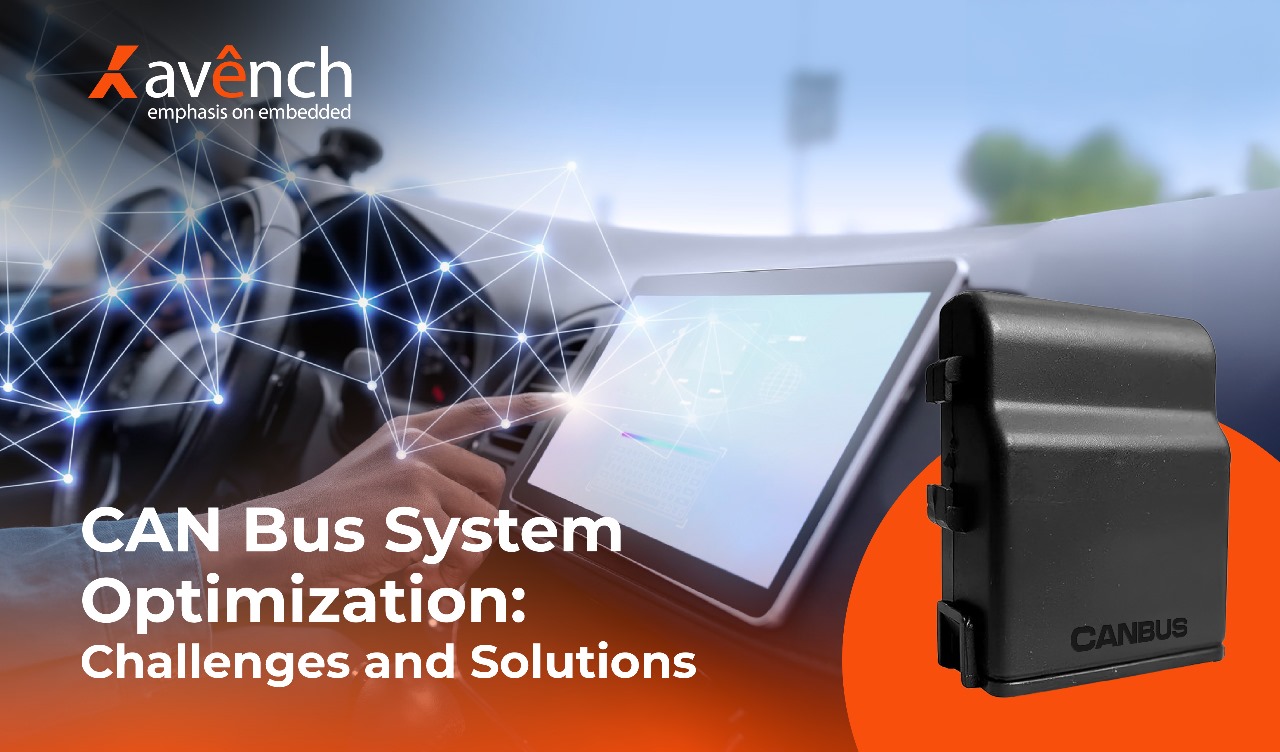Controller Area Network (CAN Bus) has been the propeller of industrial automation, automotive control systems, and embedded system designs for a few decades. Developed for efficient real-time communication between microcontrollers and devices, its significance has only grown with the introduction of Industry 4.0, IIoT (Industrial Internet of Things), and advanced automation.
But when companies scale up, technical teams are faced with significant issues in scalability, security, interoperability, and integration with existing systems. Top management is often not able to rationalize CAN Bus upgrades due to ROI concerns, downtime, and long-term viability.
This article identifies key pain points in CAN Bus deployments, offers remedies for overcoming them, and highlights real-world application examples that can be used by technical teams in making a sales pitch to the leadership.
1. The Industry’s Largest Challenges with CAN Bus Implementation
a.Scalability and Bandwidth Constraints
Pain Point: Legacy CAN 2.0 networks are capped at 1 Mbps and find it difficult to keep pace with the rising amount of real-time data needed in contemporary applications.
Solution: CAN FD (Flexible Data Rate) increases data transfer speeds to 8 Mbps, supporting greater bandwidth applications without necessitating a complete overhaul of infrastructure.
Industry Scenario: Vehicle manufacturers adopting CAN FD to allow ADAS and autonomous driving functionalities with backward support.
b.Legacy System Interoperability
Pain Point: Factories and industrial floors are typically supported by decades’ old CAN Bus infrastructures not designed for existing networking needs.
Solution: In having protocol bridges and middleware, CAN networks become able to interact with Ethernet, OPC UA, and MQTT IIoT networks, allowing upgrade in steps without disrupting operations.
Industry Example: CAN-Ethernet bridges installed in factories to upgrade without a costly system-wide overhaul.
c.Security Threats in a Connected World
Pain Point: With more cars connected and factories smart, CAN Bus—originally for closed systems—is highly vulnerable to cyber attacks.
Solution: The use of cryptographic authentication, intrusion detection systems (IDS), and end-to-end encryption secures CAN Bus without sacrificing efficiency.
Industry Example: Utilization by the automotive sector of secure CAN (SecOC) standards to protect connected vehicle networks from cyber attacks.
2. Best Practices in Future-Proofing CAN Bus Implementations
- Implement Advanced Protocol Stacks (CANopen, J1939, ISO 26262)
Applying standardized, higher-level protocols, organizations are able to upgrade the performance, diagnostic features, and compatibility with next-generation industrial applications of CAN Bus.
Example: Heavy machinery utilizes J1939 for fleet telematics, improving predictive maintenance and reducing surprise failures.
2.Perform Predictive Maintenance using Data Analytics
AI-driven predictive analytics can use CAN Bus data to identify anomalies before failure, lowering maintenance expense and unplanned downtime.
Example: Factory robots using real-time CAN Bus diagnostics to detect motor wear before breakdowns.
3. Adopt Hybrid Network Architectures
Instead of total migration, organizations can superimpose CAN Bus on Ethernet or wireless networks for a gradual transition to future-proof architectures.
Example: Smart factories using CAN-to-Wi-Fi gateways to manage remote equipment in real time.
Decision-Maker Considerations: The Business Case for CAN Bus Upgrade
For executive management, technical groups must provide a compelling ROI case for CAN Bus upgrades. Here’s how to frame it:
1.Cost-Benefit Analysis
Historical CAN failure causes manufacturers to spend millions on downtime and repairs.
CAN FD or CANopen solutions offer incremental improvements with minimal disruption.
2.Compliance and Regulatory Requirements
Automotive and industrial applications must catch up with evolving ISO, IEC, and cybersecurity standards.
Updating avoids expensive last-minute rebuilds.
3.Competitive Advantage
Companies modernizing CAN Bus networks stay ahead in terms of faster innovation, enhanced reliability, and lower maintenance.
Companies not updating risk falling behind in efficiency and security.
4. Real-World Case Studies: Effective CAN Bus Optimization
Case Study 1: Updating a Factory’s CAN Network
Challenge: There were recurring network bottlenecks in an aging CAN Bus infrastructure in an industrial plant.
Solution: Implemented CAN FD with adaptive bitrate to provide higher data payloads.
Impact: Reduced latency by 40% and overall operation efficiency improved.
Case Study 2: Secure CAN Bus in Automotive Applications
Challenge: A large vehicle manufacturer saw their vehicle networks impacted by cybersecurity attacks.
Solution: Integrated Secure CAN (SecOC) protocols and real-time encryption.
Impact: Prevented remote hacking attacks and ensured safety as well as compliance with regulations.
Case Study 3: CANopen for Smart Agriculture
Challenge: Precision agriculture implements necessitated real-time machine-to-machine communication.
Solution: Deployed CANopen for seamless tractor-to-implement interoperability.
Impact: Improved fuel efficiency by 25%, reducing operating costs.
Conclusion: Ensuring a Scalable, Secure Future for CAN Bus Systems
As companies go for automation, predictive analytics, and cybersecurity, CAN Bus evolves as well. Firms can make their CAN networks robust, future-proofed, and complementary to modern-day digital transformation targets by addressing issues of scalability, security, and integration.
Decision-Makers’ Key Takeaways:
CAN Bus upgrades do not require replacement of the entire infrastructure—incremental improvements like CAN FD, hybrid architectures, and predictive analytics maximize value.
CAN Bus cybersecurity must be addressed in networked environments by encryption, IDS, and compliance with new security paradigms.
Interoperability with existing networks (Ethernet, IIoT, Wi-Fi) enables seamless scalability without disrupting legacy systems.
With smart, strategic investments, technical teams can build a strong business case to management so that CAN Bus remains a powerful enabler of innovation, efficiency, and competitiveness.
Avench is one of the leading embedded systems development in usa to know more information for any sales queries, wait for no further contact us at +1 (775) 404-5757. You can also email us at sales@avench.com, or fill the query form in a website.

